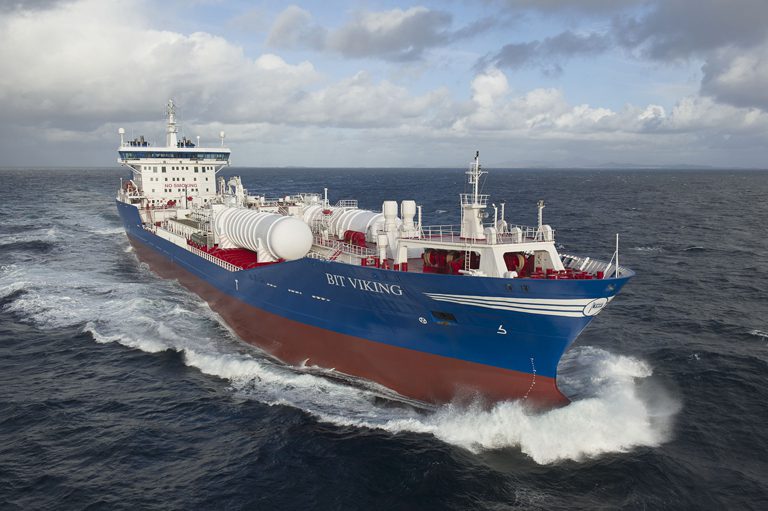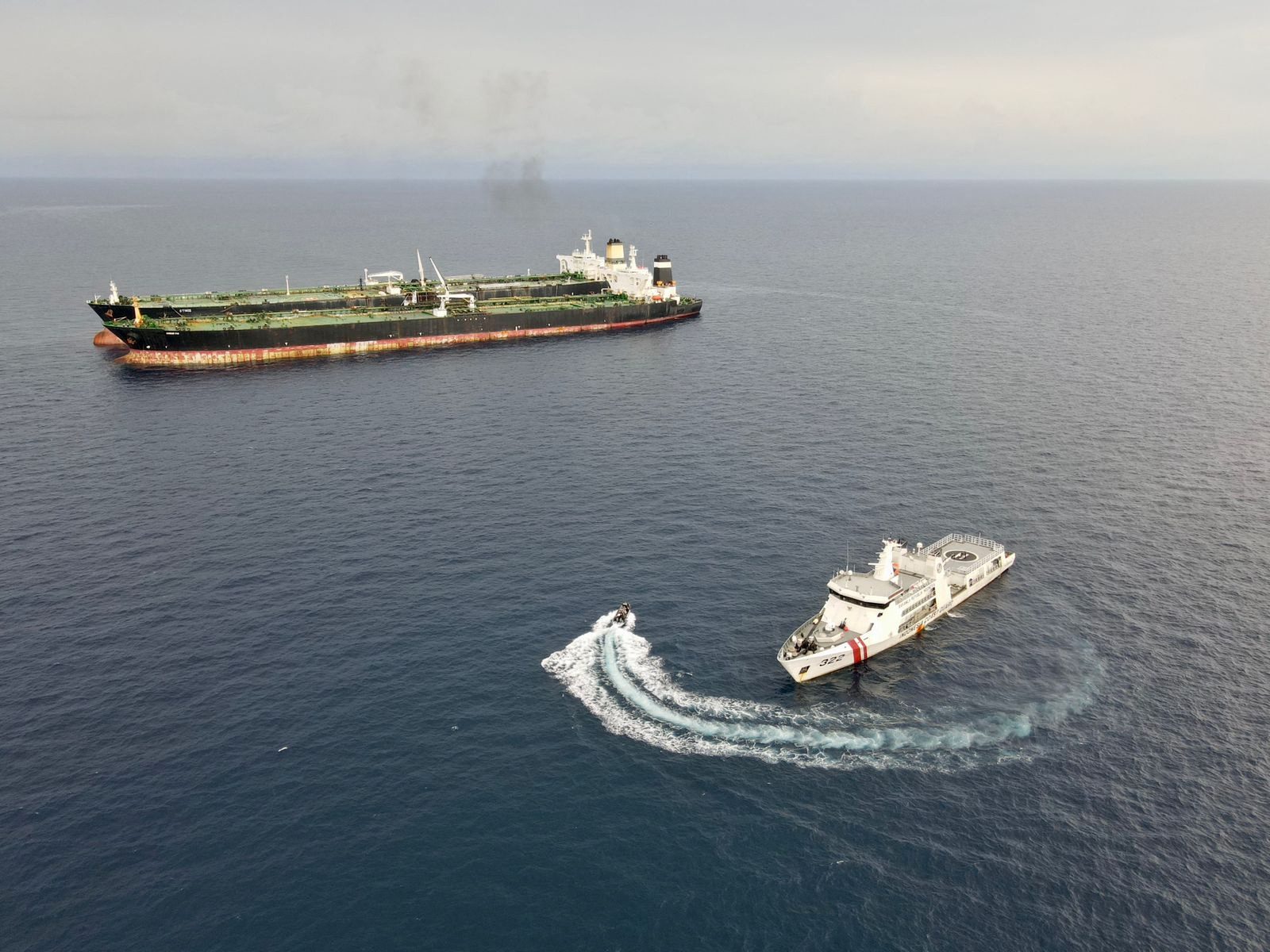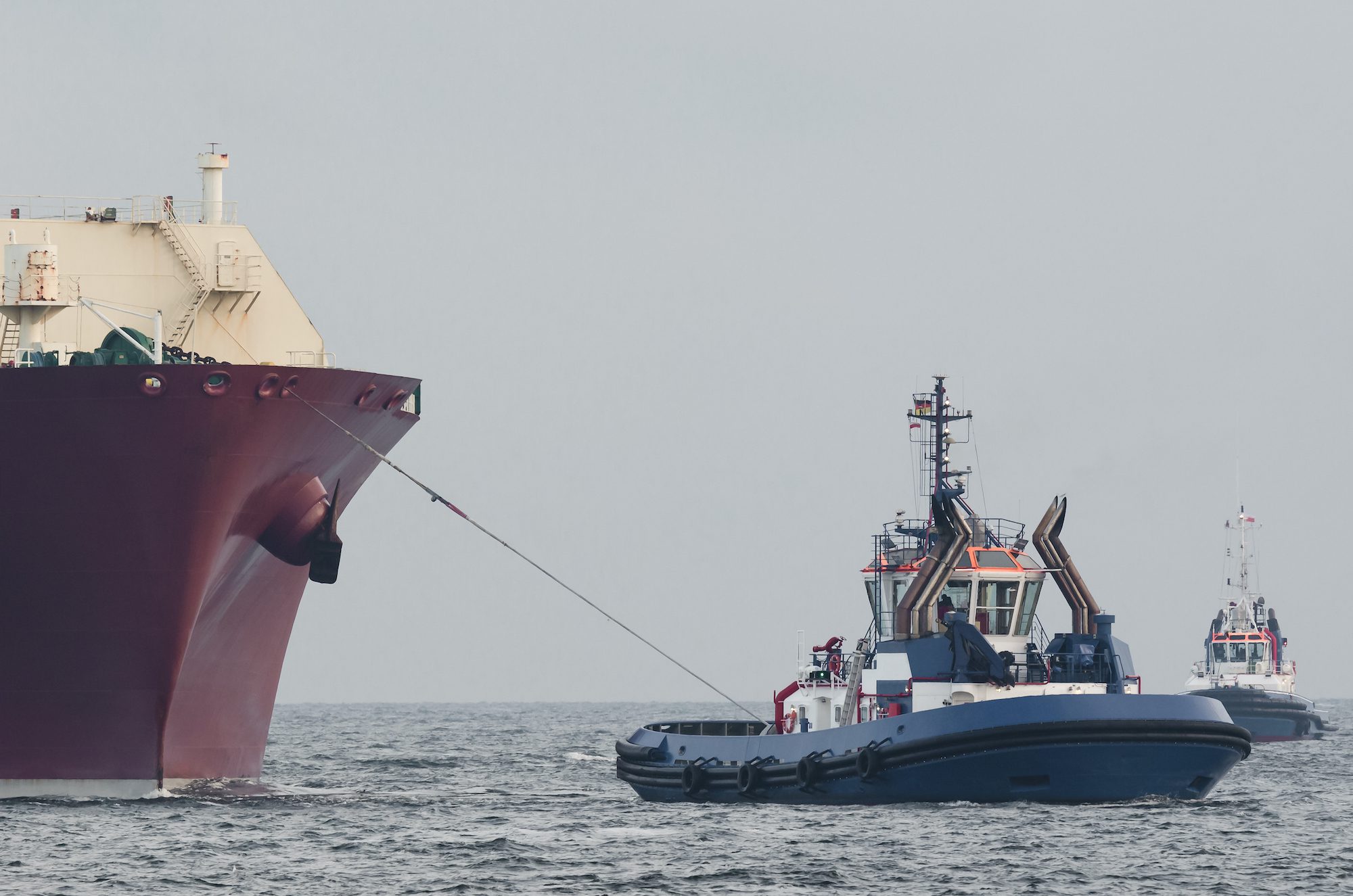LNG-powered Bit Viking. Photo: GL
By Gurdeep Singh
SINGAPORE–When MS Selandia made her maiden voyage from Copenhagen to Bangkok in February 1912 she transformed the shipping industry, launching an era that would see the end of coal’s role and its replacement by oil as the dominant fuel for ships.
Now, 100 years later, a few shipping companies are moving towards a new fuel source, deep-chilled liquefied natural gas, driven by tougher environmental standards, higher oil prices and a growing natural gas supply. Many in the industry see it as the ship fuel of the future, given seemingly vast and largely untapped reserves of shale gas worldwide, although its take-up may well be slower than oil’s.
Stricter shipping pollution standards mean ship-owners need either to install expensive scrubbing equipment to cut emissions or use costlier low-sulfur oil at a time the global refining industry is ill-equipped to meet a big increase in demand, or perhaps turn to gas.
Major players taking a serious look at LNG include France’s CMA-CGM, the world’s third largest container shipping firm, which is working with Daewoo Shipbuilding & Marine Engineering Co. (042660.SE) to develop an LNG-powered container ship.
“The first vessel could be built within 5 years when a solution has been finalized to supply the vessels with LNG, either using a small vessel alongside, in a container terminal or even in an LNG tanker terminal,” said Ludovic Gerard, Vice-President of CMA Ships.
Last year, Finland-based Wartsila Oyj (WRT1V.HE), a major ship engine maker, completed the conversion of its first oil products tanker to LNG from fuel oil. The Bit Viking is one of the largest vessels to run on LNG although at 25,000 dead-weight tons it is a minnow compared to many container ships and oil tankers. Most of the 30 or so LNG-powered vessels in service now operate in and around Norway, which pioneered the idea more than a decade ago.
LNG-fuelled ships will make their first appearance in China next year as oil giant Cnooc has an order with Wartsila for two tugboat dual-fuel engines that can run on oil or natural gas. Globally, orderbooks also include a high-speed ferry between Uruguay and Argentina and a few small vessels in the U.S. and Canada.
“Future environmental regulations, as well as anticipated climate change regulations, will be very costly to comply with and [liquefied natural gas] may have benefits in meeting these regulations with less additional emission cleaning required,” said Bo Cerup-Simonsen, head of Maersk Maritime Technology.
Using more lower-sulfur fuel oil or alternatives like marine diesel will tighten global oil markets and raise shippers’ operating costs as ships vie with other industries for distillate fuels. The dynamics of the global oil refining industry are working in LNG’s favor as refiners are investing millions of dollars to make sure they produce as little fuel oil as possible, leading to a gradual decline in supplies and a higher prices.
“Demand for low sulfur fuel will explode in the future–from 2015 and 2020, and it doesn’t look like the refineries are shaping up to meet the demand, at least not from the start,” said Lars Petter Blikom, natural gas segment director at Det Norske Veritas, one of the world’s biggest ship classifiers.
Fuel oil is what remains after more valuable products like gasoline and diesel have been extracted from crude and is typically a loss-making commodity. Russia, supplier of nearly half the fuel oil traded globally, has raised export taxes to force refiners to upgrade plants and reduce output of the residual fuel.
Enter LNG. Natural gas is relatively clean and breakthroughs in production technology has caused prices to tumble in North America, which has some of the world’s most stringent environmental laws. There are vast reserves trapped in shale in countries as far apart as Argentina, South Africa and China.
A widespread take-up of LNG is still over the horizon given the need for new distribution systems, and the cost of re-equipping vessels or building new ones may be too much to swallow now for a shipping industry in the doldrums. Also, the LNG tanks needed will take up 3% or more potential cargo space than oil given its lower energy density.
“Shipowners today have a big problem, their freight rates are close to rock bottom. So it’s a bad time to talk about anything that requires investment up front even if it offers lifecycle benefits,” said Mr. Blikom of DNV.
Shipping companies will need to make a tough call on future LNG and fuel oil prices before making big investment decisions, which could mean the transition will start with dual fuel engines that can run on both fuels, depending on their price as well as the ship’s area of operation. Ships which regularly pass through Emission Control Areas with strict pollution limits, like those introduced around North America last month, would likely be the first to make the switch.
Major ports around the world will have to set up LNG bunkering facilities before the transition. Very few are able to supply LNG to ships, although Singapore, the world’s biggest conventional ship fuel supplier, is studying the feasibility of LNG bunkering.
“Due to aspects like reduced flexibility in trade patterns and the high switch-over cost, ship-owners will be careful to make this move even if it looks good at the moment,” said Mr. Cerup-Simonsen.
(c) 2012 Dow Jones & Company, Inc.
Unlock Exclusive Insights Today!
Join the gCaptain Club for curated content, insider opinions, and vibrant community discussions.

 Join The Club
Join The Club











